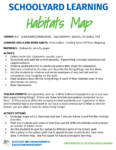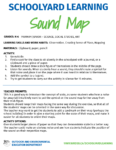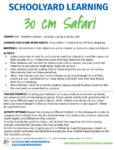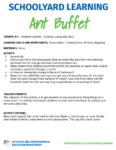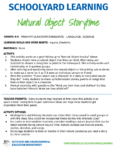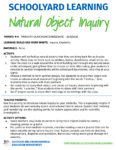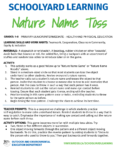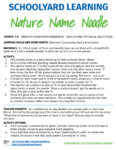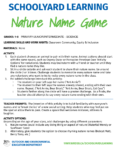Do you get different animals at the pond based on what season it is?
Many of the animals that live in the pond are the larvae of flying insects. Some different species are at different stages of life at different times of the year. Toads lay eggs in the spring, and the tadpoles develop very quickly, and hundreds of tiny toads are hopping around by the summer. Green frog tadpoles take about two years to develop into frogs, and so we find green frog tadpoles all year long. These are just a couple of examples of how life in the pond changes through the seasons.
Which predator do you think is at the top of the food chain at the pond?
Adult snapping turtles can grow quite large, and are omnivores, but snapping turtles are not active hunters. They eat a lot of dead plants and animals, If you want to see a predator in action, check out this video of a dragonfly hunting: https://youtu.be/e4ObOf5c8lo
How is the current climate change crisis affecting ponds?
Climate change affects weather patterns around the world. Some areas will see less rainfall, and wetlands will dry up. Some areas will see more precipitation, and wetlands in those areas will become more important for preventing flooding. The truth is, we don’t know all of the changes that will occur.
How long does it usually take for plants and animals to adapt to climate change?
In some animals, we see changes in behaviour quite quickly. If one food source disappears, some animals are able to survive by changing their diet. We do not see changes in physical adaptations as quickly. If snow were to disappear in the arctic, polar bears would still have white fur. Animals have evolved over time to have the physical characteristics that help them to survive in their habitat. If the habitat changes quickly, many animals may not possess the physical adaptations to survive.
How do you know how many animals live in the pond?
We don’t! That’s what’s really fun about doing pond studies. The world below the surface is hidden from us. When we scoop with our nets, we are just getting a smaller sample of what lives there.
If the sunlight only ever shined once every 2 months, would the aquatic ecosystems look the same as they look now?
Nope. Nearly all plants would die, because they would not have sunlight to do photosynthesis. Then animals that eat plants would die. Then the animals that survive by eating other animals would die. Hopefully the sun keeps shining.
Do you do anything to a pond to prevent or help a pond through weather changes/climate diversity?
When it rains, gravity pulls water downhill where it collects in low-lying places. Those are where the wetlands are in our landscape. We can’t alter that process without changing the weather or how water runs downhill. Tough to do! What we can do is protect the wetlands we have from development and pollution.
What would happen if someone brought a new predator into their ecosystem?
When any new species is added to an ecosystem, it throws off the balance of the system. Burmese pythons are an invasive species in the Florida everglades, and they are eating everything! They are eating rabbits, racoons, birds, turtles, alligators, small deer, and other snakes. The effect of a new predator can be devastating.
What are some predators that live in ponds?
In ponds, there are many carnivores and omnivores that hunt other animals. These include dragonfly nymphs, damselfly nymphs, backswimmers, giant water bugs, predaceous diving beetles and water scorpions. Some of the animals that students consider to be top predators, like snapping turtles and crayfish, are more likely to eat something dead than go hunting after something living.
Can a snapping turtle bite off your finger?
On land, snapping turtles should be treated with caution. They are defensive, and can injure you with a quick snap with their long neck and strong jaws. In the water, snapping turtles have few predators, and do not see you as a danger. You can go swimming in a lake without worrying about a turtle grabbing at your toes.
What plants grow in or around swamps and ponds? Are they edible?
There are lots of plants in ponds like millfoil, bladderwort and pondweed. An edible plant common in ponds is the cattail. The roots can be boiled or baked. Indigenous groups made a type of flour from cattails by drying and grounding up the fibrous tubers.
Can a tadpole be older than a frog?
Bullfrog and green frog tadpoles can take two years to develop into frogs, while leopard frog tadpoles take only a few months. So, a green frog tadpole could be older than an adult leopard frog.
How do animals sleep in the water in winter?
As the temperature drops in the water, everything in the animals’ bodies slows down – breathing, heart-rate, movement etc. Because they are burning few calories, many animals don’t eat at all during the winter. Animals like turtles and frogs are able to absorb oxygen through their skin.
Is there a type of animal that will eat the mud?
Mud in the pond is made up of inorganic material like clay, plus organic material from decaying plants and animals and also, uh, animal feces. There are nutrients in that stuff. So some animals like aquatic earthworms eat the muck, and some animals like clams are filter feeders, sucking in whatever is in the water around them, and digesting the nutritious bits.
What is the most common thing seen in a pond?
Water.
How does a cattail grow soaked in water?
The cattail leaves store energy in a tuber (root) in the mud under the water. In the winter the leaves die, but there is enough energy stored in the tuber to grow new leaves in the spring that will grow above the water. Those leaves will then absorb energy from the sun through photosynthesis, and send more energy down to the root. Then the process repeats.
Are there an adequate number of aquatic ecosystems in the Kitchener-Waterloo area? Or have they been threatened by urban sprawl?
Good question! Wetlands in Southern Ontario used to cover about 13% of the land. Now it’s less than 5%. We drained the water out of wetlands to grow food and build towns and roads. So, yes, wetlands have been threatened. As well, run-off from our roads and lawns and farm-fields brings pollutants into our wetlands, harming water quality.
Having more wetlands slows rainfall from running off the land straight into streams and rivers. The more wetlands you have, the less flooding you have. The Grand River is susceptible to flooding, partly due to the loss of wetlands in the watershed.
What is the most common plant to live in a pond?
One of the plants that is most obvious at most ponds is cattails. Some ponds have a lot of duckweed covering the surface of the water. Tough to know what plant is most common…
What does a Stickleback fish eat?
Stickleback fish are mostly carnivorous, eating insect larvae and eggs. Though, in an aquarium, they will eat fish flakes.
Why are leopard frogs slimy?
Frogs absorb water and oxygen through their skin. In order to do that, their skin must remain moist. The slime on their skin also includes chemicals that prevent bacteria from growing.
How long have dragonflies existed?
Dragonflies have been around for about 300 million years. They were one of the first animals to live on the surface of the earth, 80 million years before the dinosaurs.
How long do dragonflies live?
Most dragonflies live for a couple of years in the water as nymphs, and then a few months as adults.
How can you tell the difference between a male and female painted turtle?
Male painted turtles have long claws on their front feet for stroking the females during courtship. Female claws are shorter. Male painted turtle tails are also longer than the females.
How many legs does a hellgrammite have?
Only six! They look like they have a lot, but only the front six are legs. The rest are spines that protect the hellgrammite from predators.
How do ponds have fish if they are not connected to other water.
There are two common ways that fish get to ponds that have never had fish before. One way is flooding. Eggs and fish in one area can get to another when water floods over land. Many biologists also believe that fish eggs get stuck in the fur and feathers of animals. If Canada Geese are swimming and splashing around in a lake with millions of fish eggs in it, eggs can get caught in their feathers. If the geese fly to a pond that does not have fish, eggs can fall off and hatch. Some people move fish on purpose so that they can catch minnows for fish bait.
What organisms in a pond ecosystem are most affected by climate change?
That’s a difficult question to answer. Part of the problem with climate change is that we don’t quite know which plants and animals will be affected the most. One thing we know is that algae prefer warm water, and if a pond has a lot of algae, the oxygen level can drop in a process called eutrophication. A drop in oxygen levels affects a lot of the animal life in a pond.
What does the food chain look like?
All food chains start with energy from the sun being stored in plants during photosynthesis. Then something eats that plant. Then something eats the animal that eats the plants. For example, duckweed grows in the pond. A water boatman feeds on the duckweed, sucking the juices out of the plant. Then a dragonfly nymph eats the boatman. Energy is passed along the food chain, but all of the energy originates with the sun.
How many different kinds of fish are in a pond?
Some ponds have no fish, and some have several species. The Laurel Creek pond probably has about seven to ten species. The Heidelberg pond, maybe five or six.
Since there’s no defined difference between a pond and a lake, do you personally have any way of differentiating between them? Is it something related to their location, size, or depth?
It often is just a matter of size whether a body of water is called a pond or a lake. Sometimes, a body of water is referred to as a pond if rooted plants are able to grow all the way across.
How do natural disasters (floods, tornados, droughts) affect aquatic ecosystems?
Wetlands are quite resilient. They can flood and dry out. But they exist where water collects after rainfall. Unless people drain wetlands, they will still exist after storms, tornadoes, earthquakes and fires.
How do ponds form?
Most ponds that you will see around Ontario formed in two ways. Sometimes people dig them. Stormwater ponds are created by people to help filter water running off our communities, and some people create ponds just for their beauty and natural elements.
The other creators of ponds are beavers. They dam streams and creeks, flooding areas that turn into new wetlands in the process. In one study, there were 75 times as many ducks in areas that had beavers living in them.
Why do swamps smell bad?
When plants decompose under water without the presence of oxygen, methane is created. Methane is a gas that can smell bad. The other gas that is created during decomposition is hydrogen sulfide, which can smell like rotting eggs. Some people might think the bad smell means the wetland is polluted, it’s a natural process.
What are some of the most harmful effects that humans have on aquatic ecosystems? How can we help to prevent these effects caused by humans?
One large effect humans have on aquatic ecosystems is the draining of wetlands. Less than one third of the wetlands that used to exist in Southern Ontario exist now.
Any pollutants in the air and on the land mix with water when it rains and end up in our streams, rivers, lakes and eventually, oceans. Fertilizer, pesticides, salt, plastics are just some of the pollutants that end up in our water. The fewer of those pollutants we have on the land, the fewer end up in the water.
Are there endangered species living in common ponds?
Locally, the Jeffersons salamander is an endangered species that lays eggs in ephemeral ponds in forests – ponds that only exist for a short time in the spring.
Blandings turtles are also endangered. Snapping turtles are a Species of Concern. The turtles are in trouble due to habitat loss and getting run over on roads when looking for nesting sites or new wetland habitats.
What would be the best way to protect ponds from invasive species and the harm they cause?
Never release aquarium pets like fish and crayfish and snails into the wild! Many local ponds have a snail called the Chinese mystery snail living in them. This is a snail that was sold in pet stores, and then released into the wild when the owners didn’t want them anymore. They are now invasive in our local waterways. Many stormwater ponds near subdivisions have goldfish and koi in them, released by neighbours.
How many aquatic ecosystems are actually protected from us?
In Ontario, if the Ministry of Natural Resources believes that a wetland is very important, it can designate it as a “Provincially Significant Wetland.” This means that it cannot be drained or developed. However, all wetlands are important, and considering that we have lost most of them in southern Ontario, we should protect them all.
When and how did the pond form? How long did it take for the first animals to migrate there?
The pond in the Pond Live video was dug out for kids to swim in at summer camp, probably during the 1960’s. No one swims in it today. The first animals to migrate to the pond would have been flying insects like mosquitoes, midges and dragonflies, looking for places to lay eggs.
Why are leopard frogs called leopard frogs?
Leopard frogs are called leopard frogs due to the spots on their skin.
Why do animals in the pond live in the pond?
Animals live where they do because they can meet all of their needs there. There is food, water, shelter, air and space. Every living thing needs water to survive, so ponds are a magnet for life.
What is the size and weight of a leopard frog?
Leopard frogs are about 7-12 centimetres long, and weigh about 20 grams.
What’s a pollywog?
A pollywog is a nickname for a tadpole.
What do frogs eat?
Frogs will eat anything they can catch. At a camp I worked at, there was an aquarium with crayfish and fish and frogs in it. Someone put a bullfrog in the aquarium, and the next morning, every other animal in it had been eaten by the bullfrog.
Why can’t you go fishing for frogs?
One time I was casting my fishing rod with a worm on it, and a frog grabbed it! Luckily it didn’t swallow the hook. It’s okay to catch a frog in a net as long as you don’t handle it too much, and then let it go afterward.
I think it’s pretty cruel to use a frog as bait. You have to put a sharp hook through a live frog.
Why are alien species called alien species?
An “alien” is just a living thing that came from somewhere else. Zebra mussels in Canada are an alien species because they came from Russia. “Alien” does not always mean from outer space.
What do painted turtles eat?
Painted turtles are omnivores, eating plants, insects and worms. They have quite a varied diet.
How would you deal with invasive species, such as snails?
In most cases, invasive species should be removed from habitats where they do not belong.
Are there any fish that are poisonous by touch?
In the oceans, yes. In local ponds, no.
Do birds come to the pond?
Birds that like to live near ponds include ducks, geese, kingfishers, sandpipers, herons, and red-winged blackbirds.
If you discovered a new species of frogs what would you name it?
Lithobates McCammonus
What type of water is in the pond?
Fresh water (not salt water).
Do raccoons live there?
Yes. Raccoons love ponds. They can find food like crayfish and frogs there. And water.
What kind of fish live in the pond?
In ponds locally, some of the fish you can find are dace, darters, sticklebacks, mudminnows and chub.
How do ponds get their shape? (without water)
The land around us was mostly shaped by the last glaciers scraping over the surface. If water collects in a low area, the shape of the wetland will reflect the shape of the land that was there before the water.
What/are there naturally occurring things that can cause a habitat such as a pond to become a wetland or swamp?”
Water runs downhill when it rains. Precipitation and gravity determine where wetlands are,
How do gills work?
Gills are filled with tiny blood vessels called capillaries. When oxygen in water passes over gills, some of the oxygen is absorbed into the bloodstream of the animal.
The pond and forest by my house is lovely right now but I can’t help but notice the litter near the water. What can I do?
If you can safely pick up garbage with an adult, go for it. The pollution that affects the pond the most may be invisible. Pesticides, fertilizer, oil and salt may have a worse impact on the habitat than the wrappers and pop cans you see laying around.
What percentage of the earth’s water is in ponds like the one you work at?
Less than 0.00001 %. Hardly any.
Do pond animals keep territories and kick other animals out?
Yes. Dragonflies patrol territories chasing off other dragonflies. Females pick the best spots in the pond to lay eggs, and males want to keep those areas for themselves so that female dragonflies will mate with them.
What is the most interesting thing you have caught or seen?
One morning, I went out at Laurel Creek, and there was a beaver in the pond! The pond is quite small, and not large enough for a beaver to live in, but it was enjoying a nice morning swim. That is the only time I have seen a beaver in the pond.
What is the biggest frog or toad in ponds?
In North America, the bullfrog is the largest frog.
What is the most deadly thing you have come across?
There is nothing in a pond that can kill you. Giant water bugs can bite if you’re not careful handling them.
What is the biggest thing you have found in the pond?
Snapping turtle.
Do fish eat electricity?
Um, no.
There are crabs at the beach. We wonder if there are any crabs in the pond?
The only freshwater crab that has been found in North America is the Chinese Mitten Crab, an invasive species that has been found in the Great Lakes.
We are studying soil and wondered what kind of soil is in the water and what does it feel like?
The soil on the bottom of the pond is a mix of clay and decomposing plant material. It feels very squishy – not like sand.
Are there any creatures that live in the soil in the pond?
There are animals like midge larvae, tubifex worms, and aquatic earthworms that live in the mud on the bottom of the pond.
How do the animals survive when the pond freezes?
If the water does not freeze all the way to the bottom of the pond, the animals survive in the water, and some like to burrow into the mud.
In small aquatic ecosystems (ponds) what is your favourite animal to find?
I like crayfish. They have so many neat adaptations. They carry around their eggs, They react to your actions. Kids think you’re cool if you pick them up.
What would live under water in stormwater management ponds? Fish, nymphs, etc.
Some stormwater ponds are very diverse, having all of the animals that we see in more natural ponds. But, because stormwater ponds are designed to catch run-off and pollutants from neighbourhoods, sometimes those ponds have fewer animals. It depends.
Why is the water in the pond greenish brown?
Sometimes the water running into ponds has sediment (dirt) in it. Sometimes the water has algae in it. Sometimes when you look through water, you see the bottom and not the colour of the water. A greenish-brown colour does not mean the water is polluted. Sometimes crystal-clear water just has nothing living in it.
What is a hellgrammite?
A hellgrammite is the larva of the dobson fly.
How can you tell which tracks were made by which animal?
Animal tracks we see in the mud at the pond include deer, raccoons, geese, ducks, wild turkeys, mink, and coyotes. They all have different feet and different ways of walking, so we can tell what they are.
Do frogs drink the water that they swim in?
Frogs absorb water through their skin. They don’t drink water with their mouths.
I’d like to know how ponds directly affect me living in a city, and what things we can do in our everyday lives to protect and support these ecosystems.
We drink the water that runs off our land into the Grand River and seeps into aquifers. Wetlands filter that water for us. Reducing the use of fertilizer, pesticides, and salt can help water quality. Fix anything leaking out of your car. If it leaks on to roads, it washes into wetlands eventually. Buy organic food that wasn’t grown with the use of pesticides. Put your eavestrough spouts into your lawn and not on to your driveway, so that the water can be filtered by the ground instead of running down the road picking up dirt and pollutants on the way to the water.
What eggs do you find in the pond?
In the spring we find a lot of toad and frog eggs. Around the edges of the pond there are sometimes painted turtle and snapping turtle eggs buried in the soil. Snail eggs are often attached to plants in the pond.
What is the water table?
When water seeps into the ground, at some point the ground is saturated, and can no longer take it any more water. That level is the “water table.” If you dig a pond that is not fed by a natural spring, the level of your pond will be at the level of the water table. Any water higher than the water table will keep seeping into the ground. Any water at the level of the water table will stay where it is.
How deep are ponds?
Some ponds dug by people are pretty deep. Most natural ponds are shallow, not more than a couple of metres.
How are fish able to breathe in dirty water?
Fish have trouble breathing in dirty water. There is usually not as much oxygen in the water, and the silt can clog up the gills of many animals.
What do dragonflies do in the winter?
Some fly south! To areas where water does not freeze and they can still catch flying insects. Dragonfly nymphs will overwinter in the pond and emerge in the spring as adults.
How do the bugs in the pond breathe underwater?
Some insects like dragonfly nymphs and damselfly nymphs have gills that absorb oxygen out of the water. Some insects come up to the surface to breathe air. Some, like giant water bugs and water scorpions have tubes coming out of their abdomens that they stick above the surface of the water to breathe
How do salamanders regenerate their tails?
If a predator grabs a salamander by the tail, the salamander can drop its tail. The predator gets the tail, but the salamander is able to survive. Where the tail breaks off, there is a group of stem cells that contain all of the new information to grow a new tail. The process can take between one month to a year, depending on the species.
What types of micro-organisms live in the pond?
There is a whole world of life in a drop of pond water. You might see paramecium, rotifers, copepods, daphnia, and cyclops.
How did all the insects and critters get into the pond to begin with?
Many of the animals in the pond are the larvae of flying insects. Many of the animals living in the water can fly – animals like backswimmers , water boatmen, lesser water bugs, water scorpions, different beetles. The muskrats walked.
How long do frogs live?
In the wild, most frogs would be lucky to live a couple of years, but in captivity, green frogs, leopard frogs and bullfrogs can live to be eight or nine years old.
Why don’t frogs sink when they land on a lily pad?
Little frogs can sit on big lily pads without sinking them. Big frogs can’t sit on small lily pads.
Is the pond water good to drink?
Even pond water that is considered unpolluted should not be consumed. You never know what animals have pooped in the water.
Do ponds have gold in them?
No. Not here. I’m not telling.
Are the fish in the pond edible?
There are only small fish in most ponds – minnows. Lots of animals eat them. There are no large fish in any of the ponds at our outdoor centres.
In the average aquatic ecosystem are there more amphibians or insects?
In a typical pond, there might be three to five types of amphibians, and around twenty types of insects living in the water.
What is the biggest creature you have found in the pond?
Snapping turtle. Beaver. Great blue heron. Those are big pond animals…
Has a crayfish ever pinched you?
Yes! Big crayfish hurt, small ones don’t.
What is the difference between the water scorpion and a land scorpion?
Water scorpions and land scorpions are totally unrelated. Land scorpions are related to spiders. They have a stinger in their tails. Water scorpions are insects, related to giant and lesser water bugs. They can fly. They breathe through their tails.
How does a leech stick to you?
When a leech attaches to another animal, it injects an anaesthetic that prevents the animal from feeling it. They also inject an anticoagulant to keep the blood flowing. Some leeches have teeth that they run back and forth to cut through the skin. Once attached, they may feed until they weigh five or ten times as much as when they started.
How do fish learn to swim?
All animals have instincts – behavioural adaptations that help them to survive. Fish don’t have to learn how to swim. They know instinctively how to do it.
How many baby tadpoles hatch at once?
A female frog or toad may lay a few thousand eggs. Most of them are eaten before they hatch. If several hundred hatch, only a few will survive to become adults. The pond is a dangerous place for tadpoles.
How do fish survive when the pond freezes?
The pond does not freeze all the way to the bottom.
How do crayfish breathe underwater if they don’t have gills?
Crayfish do have gills. The gills can also absorb oxygen from the air if they remain moist.
Can fisher spiders swim?
Fisher spiders can trap air in the hairs around their bodies. This allows them to dive under water to hunt. Once under water, they usually don’t swim around too much, because the air they have trapped causes them to float. They have to hold on to something while they hunt. More often, fisher spiders are found on the surface of the water.
How many types of snakes live in ponds?
We mostly just find garter snakes around the edges of the pond hunting frogs. In larger lakes, you would find northern water snakes basking on rocks and logs.
Are there any poisonous frogs in Ontario?
Pickerel frogs and toads have poisonous glands in their skin. Don’t eat them.
How big can giant waterbugs get?
Full grown, a giant water bug can be 5-7 centimetres long.
Why do frogs shed their skin?
Frogs need to absorb water and oxygen through their skin, so the skin needs to be soft. Old skin gets crusty and needs to be replaced.
Are there any reptiles that live in the pond?
Snapping turtles, painted turtles and garter snakes are the reptiles we see at the pond. On rare occasions, a blandings turtle.
Are there any axolotls in the pond?
Axolotls are a type of salamander that is native to Mexico. They are sold in pet stores, but should not be found in Canada. Don’t release your aquatic pets into the wild!
How deep is your pond?
Two metres in the middle.
Why do animals like to live in the water and not on land?
Animals will live wherever they can find everything they need to survive. A pond contains oxygen, water, food, shelter and space. It is a great habitat for the animals adapted to live in it.
Do fisher spiders have poison in them?
Most spiders, including fisher spiders are venomous, using fangs to inject venom into their prey. The venom kills or paralyzes the prey so that the spiders can suck out their insides.
How can you tell if an invertebrate is male or female?
In some invertebrates you can tell the difference between males and females, and in some you can’t. Male crayfish have an extra set of appendages under their bellies. Male dragonflies have a bump at the end of their abdomens.
Are there any zebra mussels in the pond?
Not yet. Zebra mussels are an invasive species, so we hope we never find them.
Do dragonfly’s hibernate?
No. The nymphs (larvae) can overwinter in the pond, and the adults of some species will migrate south, but the adults do not hibernate.
Why are the painted turtles called painted turtles?
Painted turtles have a colourful pattern around the bottom edge of their shell that makes them look like they have been painted.
In small aquatic systems such as ponds, do you fear any animal near it or in it?
The only animal I fear at ponds is humans. They can drain them or pollute them.
Have you ever caught anything you never identified?
Every animal I have ever caught at a pond was at one time new to me. Will there be more animals I find at ponds that I will be unable to identify? Probably.
What is the biggest bug you have found?
Giant water bug.
Why do frogs start as tadpoles?
Good question! All species of animals have found a way to live and reproduce that works for them. If starting life as a tadpole were unsuccessful, we would never see tadpoles. The life cycle of egg-tadpole-frog works for frogs. That is how natural selection works. If a strategy works in nature, we see it, if it does not work, the strategy disappears.
Why are crayfish called “crayfish?”
The Miriam Webster dictionary says, “Crayfish is an altered form of the Middle English word crevis, which derived from the Anglo-French word creveis, which had the stress on the second syllable. This syllable was heard and repeated as -fish frequently enough to alter the word toward the more English-sounding name.”
What are adaptations?
Adaptations are physical characteristics or behaviours that help an animal to survive. A crayfish’s claw is a physical adaptation that helps it survive in its habitat. It is used for protection and in the collection of food. The ability of a beaver to make a dam is a behavioral adaptation that helps it to survive. Creating dams helps flood areas, giving beavers greater protection and greater access to food.
What animal would kill turtles?
Turtles start life very small and can be eaten by animals such as herons, raccoons and large fish. As they grow, they have fewer predators. A recent study showed that some otters learned to eat adult snapping turtles that were hibernating during the winter.
How can you tell the differences for a female frog and a male frog?
In green frogs and bullfrogs, the males have yellow throats, and larger external eardrums than the females. In leopard frogs, the female is a little larger than the male, but hard to tell unless a male and a female are close together.
Are there bullfrogs in the conservation area?
No. There have not been any bullfrogs seen in Kitchener or Waterloo, but Cambridge has a few wetlands where bullfrogs have been found.
What is your biggest accomplishment?
Probably answering all of these questions!

